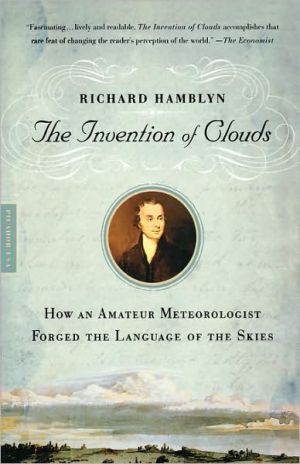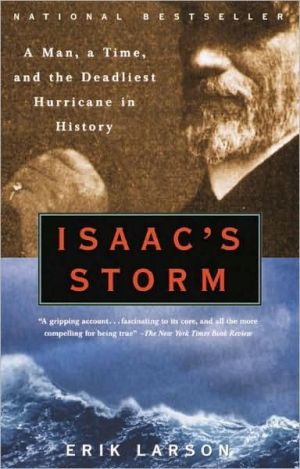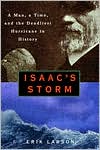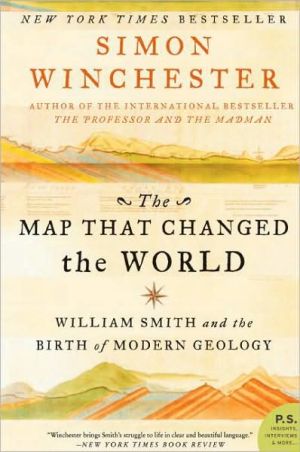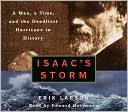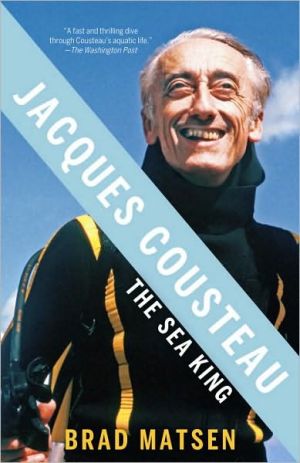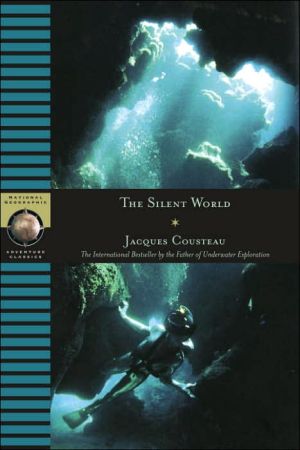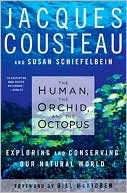The Invention Of Clouds
Winner of the Los Angeles Times Book Prize\ The early years of the nineteenth century saw an intriguing yet little-known scientific advance catapult a shy young Quaker to the dizzy heights of fame. The Invention of Clouds tells the extraordinary story of an amateur meteorologist, Luke Howard, and his groundbreaking work to define what had hitherto been random and unknowable structures—clouds.\ In December 1802, Luke Howard delivered a lecture that was to be a defining point in natural history...
Search in google:
In 1802, Luke Howard, an amateur meteorologist, delivered a lecture in which he presented a nomenclature to classify clouds. Still in use today, this nomenclature launched the science of meterology (and also captured the imaginations of some of the 19th century's greatest figures in the fields of art, literature, and science). His story is told here by Hamblyn, who is a graduate of the universities of Essex and Cambridge, where he wrote a doctoral dissertation on the early history of geology in Britain. The book's design is unusual and somewhat inexplicable: wider than it is tall (8.5x5.5), it tends to fall out of the reader's hands. Annotation c. Book News, Inc., Portland, OR (booknews.com) Kirkus Reviews When Luke Howard named the clouds 200 years ago, it was an exciting, popular event. Science writer Hamblyn taps into that electricity and sends it running through the pages of this exemplary, scientific-history deubt. Others have tried to get a handle on clouds, the most ungraspable element in nature, explains Hamblyn. There were Thales of Miletus, the Taoist Ministry of Thunder, and three men whose heads were always far into the atmosphere: Democritus, Aristotle, and Lucretius. The brilliant if quixotic Robert Hooke had classified clouds in the mid-17th century ("cleer," "checker'd," "hairy," "water'd," and "lowring"), but it was Howard's labels ("cirrus," "stratus," "cumulous," and "nimbus") that seized the popular imagination and held fast. The turn of the 19th century was a great age of science and talk, and the natural sciences were in "a search for narrative order among events. Since the sky has always been more read than measured, it has always been the province of words." If something as restless and mutable as clouds could be captured in variations of four terms—well, that made Howard a latter-day alchemist who brought home the bacon. The author does a peerless job setting the scientific scene during the period, describing the increasingly charged atmosphere at the hall where Howard unveiled his classification, and the remarkable journey it led him on into "the nacreous realm of fame": Goethe took his paper and made a poem out of it, while Constable consulted his work during his studies of clouds. Hamblyn is a particularly graceful writer, even when, rapt in the sound of his own voice, he finds another way to say what he said the sentence before. "Clouds themselves, by their very nature, are self-ruining and fragmentary," he says, then quickly reminds us that "every cloud is a small catastrophe, a world of vapor that dies before our eyes." You'll never confuse a nimbocumulus with a cumulonimbus again, once you finish this entertaining and a luminous history of meteorology.
\ \ \ \ Chapter One\ \ \ The Theater of Science\ \ \ Science, illuminating ray!\ Fair mental beam, extend thy sway,\ And shine from pole to pole!\ From thy accumulated store,\ O'er every mind thy riches pour,\ Excite from low desires to soar,\ And dignify the soul.\ \ Sarah Hoare, 1831\ \ \ It might seem difficult to imagine now, in this era of cool detachment, but in the opening years of the nineteenth century people cheered loudly at lectures. While filing through the doors into a lamplit hall, upon the arrival of the speaker and his mercurial props, or at signal moments of disclosure and display, audiences found opportunities to make themselves heard. It mattered little whether the speaker was a mechanic, a meteor zealot, or simply an amateur showman on a mission to explain. Anyone with confidence and good vocal projection could arrange to appear at one of the endless assemblies of paying spectators that were springing up fast throughout the expanding cities of Europe and North America.\ The full range of the philosophical shows and diversions available to audiences at the turn of the nineteenth century was various and impressive, particularly in the towns and cities of Britain, and especially in London, where there was nothing isolated or unusual about a lecture such as Howard's on the clouds. As evening fell, the crowds assembled and the revelations began to unfold. And what a cast of revelations they were: every animal, vegetable, and mineral known to man, samples of all four elements, and challenges to all six senses, not to mention machines, inventions, and novelties of every kind, were regularly paraded before the eyes of an astonished and insatiable public. There were demonstrations of fireworks, hydraulics, magnetics, and mathematics. There were machines to show the revolutions of the planets, the eruptions of volcanoes, or the hidden operations of the human heart. There was even a machine—dubbed the Eureka by its maker—for the production of Latin hexameters. Even a dead language could be brought to life by the magnificent actions of a machine.\ By the end of the eighteenth century the grip of rational entertainment had firmly secured itself on the public mind, and had done so because it served the equal, if novel, demands of pleasure, instruction, and imagination. Science had been on the rise for a century or more, and had now ascended to its height, where it drifted through the cultural atmosphere of the age. London, already blessed with the finest scientific and medical instrument makers in the world, was now the center not only for empirical measurement but also for conjectural pleasure.\ Such pleasure was relentlessly pursued. According to an article in the Observer on July 27, 1806, for example, the exceptional thunderstorm that had occurred the Thursday before "afforded ample opportunity at the Theatre of Science, 97 Pall Mall, to Mr Hardie's talents in defence of his new Theory of Lightning." It certainly did. The evening's entertainment had begun with what were by then familiar galvanic experiments ("among them the generation of various solid bodies from a mixture of different transparent gases") but had gone on to culminate in a spectacular display of "meteors, aurora borealis, real lightning and other phenomena," all demonstrated as alleged supports for Mr. Hardie's curious theory—stubbornly maintained against the growing evidence to the contrary—that meteorological activity had nothing to do with electrical force.\ More noteworthy than the hypothesis itself, perhaps, was the fact that well over a hundred people had paid to hear it; they were crammed into every inch of available space, with latecomers standing at the back. This was profitable entertainment at its best, delivering what the metropolitan audiences of late Georgian England wanted most of all to see and to hear: the revelations of a profligate nature.\ Yet Hardie's "Theatre of Science" was only one of dozens of such popular and paying concerns. West End theaters like the Haymarket, the Lyceum, and the Duke of York's, as well as coffeehouses, taverns, and riverside pleasure gardens, were toured continually by philosophical showmen with their arrays of scientific and pseudoscientific displays. The efforts of itinerant lectures such as James Ferguson of Banffshire (1710-1776) or the great Adam Walker of Westmoreland (1731-1821) served to define the mainstream of public scientific understanding: uncritical, nonspecialist, and wide-ranging in its enthusiasm for the spiraling diversity of knowledge. Long queues formed outside Walker's astronomy lectures at the Haymarket Theatre, where he showcased his illuminated twenty-foot model of the giddily revolving planets. His lectures, every bit as vivid as his props, were enormously successful, and he was soon able to buy himself a house in Hanover Square from the proceeds. Walker was foremost in the train of self-made scientists who earned their living by subordinating new findings in chemistry, physics, and astronomy to the glorious reign of Spectacle, ushering onto the stage in rapid succession their hydraulic and hydrostatic machines, their Copernican models of the revolving solar system, their automatic chess players and other mechanical marvels, and their baroque optical chimeras, such as the cloud of eerie smoke that slowly cleared to reveal the ghastly guillotined head of Antoine Lavoisier, the celebrated but doomed eighteenth-century chemist and tax collector.\ Lavoisier had been executed in 1794 by a Revolutionary Tribunal that was alleged to have declared, through the summing-up of the judge at his trial, that "the Republic has no need of scientists." Although it has taken the French two centuries to come to terms with this act of uncompromising barbarism ("It took them only an instant to cut off that head, but France may not produce another like it in a century," as Joseph Louis Lagrange was to comment in tears), in England the episode was quickly recruited as a cautionary tale to be told against the excesses of French revolutionary fervor. The gorily modeled head of the decapitated chemist, part of the "Phantasmagoria" show held at the Lyceum Theatre during the summer months of 1802, was flourished both as a piece of entertainment and as a tribute to the freedoms of British research. Luke Howard and his circle of philosophical friends, drawn from the young men and women of Dissenting London, were not alone in revering Lavoisier as a tragic intellectual hero, cut down in the prime of a brilliant career.\ This theater of knowledge was an important part of the climate of the Enlightenment era, an age often characterized as the Age of Reason, and it furnished the background to Luke Howard's lecture. The leading players, among whose number he was soon to take his place, were always the scientific performers, and, as in any other branch of dramatic performance, the reputations of the major stars commanded large audiences and commensurately generous rewards. The greatest of these performers, celebrated by lecturer and pretender alike, was the young Cornishman Humphry Davy (1778-1829), who became a wealthy London celebrity during the opening years of the nineteenth century. He was renowned for his extravagant and explosive demonstrations, for his speaking energy, and for the mesmerizing eye contact with which he held his audiences spellbound during the entire chemical proceedings on stage. Davy was the dark-haired, romantic son of a Penzance carpenter, and his looks and language were those of a poet, albeit a poet of enormous worldly ambition. Samuel Taylor Coleridge and Robert Southey maintained that Davy would have been a great poet had he not become a great chemist, while admiring women were heard to whisper that his eyes were made for something besides poring over crucibles.\ Here, then, was a man of great charisma, of star quality, as we might say today, although had his own scientific research not been serious enough to overtake his growing reputation as a speaker, he would now be one of the many mostly forgotten performers of the learned London stage. But at the outset of his London career (which was to culminate in the presidency of the Royal Society), his fame was as a showman rather than an innovator. His work at the Pneumatic Institute in Bristol during the 1790s had already won him a reputation as the world's most incandescent public speaker; so it was inevitable that his career would take him to London, and when he gave his inaugural public lecture at the newly opened Royal Institution of Great Britain on January 21, 1802, porters were needed to keep the impatient crowds in check. Albermarle Street, it was reported in the press, was blocked with carriages for an hour. The new lecture hall itself, with its gallery, pit, and slanting stage, was designed to give the elegant building as theatrical a feel as possible. Separate entrances had been designed to prevent the social classes from mingling, for as in other recent attractions, such as balloon and parachute ascents, where "Sweeps, Gemmen, and Ladies all scamper'd together," the Royal Institution was a popular (and populist) attraction. From there, Humphry Davy, black-eyed, magnificent, and unstoppable, rose to become the presiding spirit of public science in Britain.\ The handbills for his lectures promised electrical demonstrations, galvanic experiments, and semicontrolled explosions of gases, all of which attracted large, excited, and extremely vocal crowds who willingly paid their money to (in the language of the fairground) enter and be amazed. And it was with genuine amazement that Coleridge, after attending one of Davy's demonstrations, recorded how a sample of ether "burns bright indeed in the atmosphere, but o! how brightly whitely vividly beautiful in Oxygen gas," while the lecturer himself was just as dazzling: "every subject in Davy's mind has the principle of vitality. Living thoughts spring up like turf beneath his feet."\ Soon entire audiences were to find themselves as captivated as Coleridge. According to one of Davy's earliest biographers, "the sensation created by his first course of Lectures at the Institution, and the enthusiastic admiration which they obtained, is at this period scarcely to be imagined. Men of the first rank and talent—the literary and the scientific, the practical and the theoretical, bluestockings, and women of fashion, the old and the young, all crowded—eagerly crowded the lecture room. His youth, his simplicity, his natural eloquence, his chemical knowledge, his happy illustrations and well-conducted experiments, excited universal attention and unbounded applause. Compliments, invitations, and presents, were showered upon him in abundance from all quarters; his society was courted by all, and all appeared proud of his acquaintance." Humphry Davy was the man of the moment, the Horatio Nelson of dry land, and Luke Howard was in the audience for a number of his demonstrations. Like others, he was moved to wonder at the unbounded energy of the man. It was as if the spirit of scientific inquiry itself had found expression in the person of the genius from Penzance.\ Davy remained the most celebrated scientist in Britain for another two decades, until his death in Geneva at the age of 50 deprived the world of his talents. His end, much mourned among the learned circles of Europe, was almost certainly hastened by carbon monoxide poisoning, the result of a lifetime of hazardous experiments devised to determine the properties of gases. He would breathe them in until, as often as not, unconsciousness intervened. Waking, he would find himself slumped at his worktable, with burning lungs and an aching head. Humphry Davy's life of scientific self-sacrifice was rounded by a sadly fitting death.\ \ \ But why should the theater of natural knowledge have gained such a hold on the popular imagination at the turn of the nineteenth century? Why should its audiences have lined up for so long and clamored so loudly for more, as they did at the Royal Institution? The answer lay both in the novelty of the subject and in the state of general science education at the time. The vast majority of the population, whether educated or not, had simply never witnessed such processes as these: magnesium, flaring intensely, burning with a kind of stellar light that few could have imagined existed on earth, or sodium, first isolated by Davy himself, fizzing profanely in a container of water with a diabolic mineral energy. Metals that burned upon contact with air, or drab-looking powders, harmless on their own, that when mingled in a jar combusted suddenly and violently to produce billows of noxious gas. Phosphorus, with its white flame and searing heat, "the devil's element" (and not just because it was the thirteenth to be isolated), was offered up not only as a spectacle but also, alarmingly, as a medical marvel for the treatment of tuberculosis and gout.\ The discovery and application of such substances served the growing needs of industry and technology, and their public display was increasingly becoming an integral part of the process. New kinds of natural and material knowledge were taking their place within the wider cultural definition of the age. The secrecy of the alchemists was giving way to the high-profile publicity of the chemists and the physicists—the natural philosophers, as they termed themselves—who promised to uncover the secret properties of the natural world. And they, unlike the earlier alchemists, were delivering on their promises with aplomb.\ Their confidence was bolstered by newly emerging frameworks for scientific thought that emphasized nature's long-term capacity for slow and steady change. Alchemists had sought the secrets of sudden transformations that lay at the heart of the material world, but research in the growth areas of scientific inquiry, such as geology, with its various associated branches of volcanology, seismology, stratigraphy, and mineralogy, was beginning to make it clear that the gradual, unseen processes that had shaped the world and its objects remained ongoing into the present. Distant catastrophe was not the only model of geophysical formation. The earth was still changing as it always had, in only just perceptible increments. The terrifying new idea arose that entire stretches of landscape were continuing to rise and fall under the unseen pressures of the earth, while water, the most powerful of the elements because the most patient, was continuing to shape and reshape itself across the yielding portions of the earth. All that stands now, here in the present, will at some unknown point in the future be violently borne away. The universe will never cease its dance of change and mutability, and the processes by which it moves and convulses, whether gradual or sudden in their overall impact, were now to be considered as the true subjects of natural scientific inquiry.\ \ \ It is not hard to see how the idea of natural changeability provided much of the conceptual background for the development of scientific meteorology. Clouds and weather, perhaps more than any other world phenomena, show clearly that there is no moment in nature when nothing can be said to be happening. As clouds race toward their own release from form, they are replenished by the mutable processes that created them. They drift, not into continuity, but into other, temporary states of being, all of which eventually decompose, to melt into the surrounding air. They rise and fall like vaporous civilizations, and the challenge to early meteorology was to reveal their hidden dynamics to our sight.\ Yet meteorology is not an exact science. It is, rather, a search for narrative order among events governed not by laws alone but by the shapeless caprices of the atmosphere. Weather writes, erases, and rewrites itself upon the sky with the endless fluidity of language; and it is with language that we have sought throughout history to apprehend it. Since the sky has always been more read than measured, it has always been the province of words. Nothing has changed since Samuel Johnson complained in the middle of the eighteenth century that "when two Englishmen meet, their first talk is of the weather; they are in haste to tell each other, what they must already know, that it is hot or cold, bright or cloudy, windy or calm." The weather, as Johnson so pertinently suggested, generates language more efficiently than it generates knowledge, for while it is always available and always with us, it is equally always unclear. That is why we need to talk it through. And in lectures such as those given by the unparalleled Davy on his platform in the hall on Albermarle Street, or by the young Luke Howard, facing his audience in the chemical basement off Lombard Street, that was exactly what was happening. The world was being talked, and being shaped by that talk, into a new kind of natural order.\ The age was one of the great ages of talk, an age that raised the art of conversation to the status of a public act. Language coursed through the events that were hosted at the London lecture halls, and at the dozens of similar venues across the rest of the country, impressing them with a lasting cultural and scientific imprint. The river of words was in flood with the chemical poetry of minerals and machines: galvanism, latent heat, elective affinities, the steady state. New words and new ideas circulated rapidly like a spoken currency among new and ready audiences.\ Images from scientific discourse began to permeate the wider language in an unprecedented way. Who could resist peppering their talk with mesmerism, magnetism, lodestones, and longitude? Who, like the Bluestocking Elizabeth Montagu, could resist writing to a friend in 1761 to ask that she "make the same distinction between my heart, & those that are hard by nature, as our virtuosi do between petrified shells, & those which are lapides sui generis"? Or Jane Austen's too-rational Sir Edward Denham, of the unfinished Sanditon of 1817, who, in a characteristic tirade against novels ("those puerile Emanations"), complained that "in vain may we put them into a literary Alembic;—we distil nothing which can add to Science," although Austen and her readers would have shunned the implication. Novels, after all, offer the finest calibrations with which to measure the fluctuations of socioeconomic pressure.\ In a more sympathetic tone, meanwhile, Sarah Hoare's hymn to a sea conch was awash with harmoniously specialist terms:\ \ \ Gracefully striate is thy shell,\ Transverse and longitudinal,\ And delicately fair\ \ \ while Goethe based the structure of an entire novel on the metaphor of chemical attraction. His Eduard and Charlotte, the romantic catalysts of Elective Affinities (1809), bond helplessly to one another like a pair of affiliated molecules. They are not themselves so much as the agents of an irresistible natural force. Austen's Sir Edward Denham, no doubt, would have considered their escapades unutterably foolish.\ This world of the natural sciences was an open mine of similes, quarried to supply the increasingly expressive requirements of the age. Elizabeth Montagu's heart, like Alexander Pope's grotto at Twickenham, was encrusted with a geology of sentiment. Little wonder that Coleridge attended Royal Institution lectures in order, as he put it, "to renew my stock of metaphors." He himself was to offer new words to the language, coining the term psychosomatic after watching his hero, Humphry Davy, cure a case of suspected paralysis by administering a course of placebos.\ This was what the future must have looked like for the many who crowded the auditoriums of the burgeoning theater of science: not just a parade of man's ever increasing familiarity with the mutable territories of nature, but the unalloyed joy of their discovery and naming. Here was a cultural scene that delighted in both the unraveling of the processes of nature and the languages forged in the attempt. As new forms of understanding emerged, new forms of expression, both literal and metaphorical, appeared alongside them to support them in their work. The new ways of seeing became increasingly bound up with the new formulations of words.\ This was the climate, with its as yet unchanged belief in the positive virtues of science and scientific thought, into which Luke Howard was due to release his classified names for the clouds. And his language, too, the language of the skies, would rise to enrich the wider cultural climate of the age. It would give weight to the weightless forms of the air, institute a transformation of outlook and expression, and alter forever the relationship between the world and the restless, overarching sky.\ \ \ Excerpted from The Invention of Clouds by Richard Hamblyn. Copyright © 2001 by Richard Hamblyn. Excerpted by permission. All rights reserved. No part of this excerpt may be reproduced or reprinted without permission in writing from the publisher. \ \ \ \
List of IllustrationsPrologue: The Useless Pursuit of Shadows3Ch. 1The Theater of Science7Ch. 2A Brief History of Clouds21Ch. 3The Cloud Messenger47Ch. 4Scenes from Childhood57Ch. 5The Askesian Society89Ch. 6Other Classifications123Ch. 7Publication153Ch. 8Growing Influence193Ch. 9Fame229Ch. 10The Beaufort Scale253Ch. 11Goethe and Constable281Ch. 12The International Year of Clouds321Epilogue: Afterlife347AppCloud Species and Varieties355Notes359Acknowledgments389Index391
\ From Barnes & NobleEvery time we point at a high wispy form and whisper "cirrus" or wince at a rainy nimbus, we pay homage to a mild-mannered Quaker named Luke Howard (1773-1864). This English pharmacist was only 20 when he delivered a paper entitled "On the Modification of Clouds" to a small group of self-styled amateur scientists. Before long, his modest and well-reasoned paper gained converts, as Goethe and other European thinkers were won over by Howard's sensible system of classification. Soon Romantic poets were beckoning skyward to praise barred clouds that bloom the soft-dying day. According to London-based Richard Hamblyn, the invention of clouds helped facilitate our radiant aerial landscape. Half history of science and half rhapsody, this book charms in any kind of weather.\ \ \ \ \ Kirkus ReviewsWhen Luke Howard named the clouds 200 years ago, it was an exciting, popular event. Science writer Hamblyn taps into that electricity and sends it running through the pages of this exemplary, scientific-history deubt. Others have tried to get a handle on clouds, the most ungraspable element in nature, explains Hamblyn. There were Thales of Miletus, the Taoist Ministry of Thunder, and three men whose heads were always far into the atmosphere: Democritus, Aristotle, and Lucretius. The brilliant if quixotic Robert Hooke had classified clouds in the mid-17th century ("cleer," "checker'd," "hairy," "water'd," and "lowring"), but it was Howard's labels ("cirrus," "stratus," "cumulous," and "nimbus") that seized the popular imagination and held fast. The turn of the 19th century was a great age of science and talk, and the natural sciences were in "a search for narrative order among events. Since the sky has always been more read than measured, it has always been the province of words." If something as restless and mutable as clouds could be captured in variations of four terms—well, that made Howard a latter-day alchemist who brought home the bacon. The author does a peerless job setting the scientific scene during the period, describing the increasingly charged atmosphere at the hall where Howard unveiled his classification, and the remarkable journey it led him on into "the nacreous realm of fame": Goethe took his paper and made a poem out of it, while Constable consulted his work during his studies of clouds. Hamblyn is a particularly graceful writer, even when, rapt in the sound of his own voice, he finds another way to say what he said the sentence before. "Clouds themselves, by their very nature, are self-ruining and fragmentary," he says, then quickly reminds us that "every cloud is a small catastrophe, a world of vapor that dies before our eyes." You'll never confuse a nimbocumulus with a cumulonimbus again, once you finish this entertaining and a luminous history of meteorology.\ \
